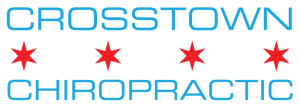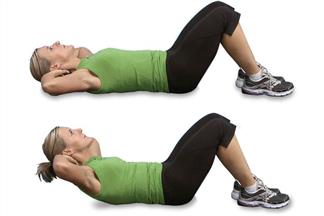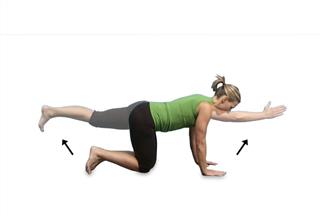
Top 3 Mistakes That Are Causing Chronic Pain
1. You are sleeping on your side: Many people think it is best to sleep on your side. This is simply not true. If you have upper back and neck pain or headaches, sleeping on your side is often an overlooked cause of these conditions. For many, it is best to sleep on your back.
Sleeping on your back is often difficult at first, so start by laying on your back for 20 minutes before bed at night. Place one or two pillows behind your knees and add some support under the curve of your neck and lower back. Roll up a hand towel to about the size of your wrist to create the support.
Pregnant women and some patients with sleep apnea have been told not to sleep on their back at night. They should continue to sleep on their side.

Side sleeping with a support between the knees is okay for your lumbar spine and pelvis, but it can often lead to shoulder and neck problems. If you are a side sleeper, make sure you have proper support between your head and the pillow so you do not kink your neck all night long. Also, be sure to keep your arms in front of you and do not reach overhead all night long. Reaching overhead for long periods of time is hard on the shoulder.
The worst sleep position: Sleeping on your stomach
Notice how if you sleep on your stomach how rotated the neck is. Sleeping like this causes tension and stiffness in the neck. If you turn your head to the right you are stretching the left side of her neck while tightening the right side. People wake up with moderate to severe neck pain frequently because of this bad habit.

2. Your work posture is terrible: Most office work promotes poor posture. Looking down for long periods of time while grading papers and spending hours at the computer checking emails promotes forward head posture and weak upper back muscles. An “upper motor cross syndrome” describes what happens to these types of workers. There are some key strategies that can help!
Posture breaks: look straight ahead, practice holding a pillow behind your back in a stationary chair- pull shoulder blades together, get up and walk around. Set timers to remind you to take a lap around the office, go to the bathroom, or do some laps while drinking your coffee.
Below are some stretching and strengthening exercises to help improve an upper cross syndrome. Even if you do not have poor posture, you will likely benefit from adding these routines to your repertoire. Click Here to see a video on each stretch
Upper Trapezius Stretch

- Sit in chair with good posture
- Grasp bottom of chair with hand
- Tilt ear toward opposite shoulder, using opposite hand to gently increase stretch
- Hold for 10-15 seconds and repeat 3x
- Repeat on opposite side
- Stretch within your tolerance, there should be no pain.
Levator Scapula Stretch

- Sit in chair with good posture
- Grasp bottom of chair with hand
- Rotate head to opposite side, then bring chin toward arm pit
- Use opposite hand to increase stretch as tolerated
- hold for 10-15 seconds and repeat 3x
Chin Tuck

- Sit or stand in an upright position
- Bring one hand to chin
- Slowly push head straight back
- Return to starting position and repeat 15 times
Shoulder Blade Squeeze

- Stand with elbows and shoulders at 90 degrees and arms out to side of body
- Maintain this position
- Squeeze shoulder blades back together
- Hold for 5 seconds and repeat 10 times

3. You Have a Weak Core: The Core is more than just your abdomen region. Strengthen your core to improve your posture. Many people have weak abdominal and gluteal muscles while having tight lumbar and hip flexor muscles. Practice these three exercises to help improve your core stability and decrease low back pain. Be sure to perform exercises within your tolerance and there should be no pain during any activity. Click Here to see a video on each core excercise
Curl-Up

- Lie on back with knees bent and hands behind head
- Curl your head, neck, and shoulders off of the ground. Try to keep your neck as still as possible while you lift your head up. Do not tuck your chin or let your head fall back.
- Lower yourself down and repeat 15 times
Bird Dog

- Assume hands and knees position
- Slowly lift one arm and opposite leg
- Keep stomach tight and back and neck straight
- Return to starting position and repeat on other side
- Repeat 10 times
Side Bridge

- Lie on your side with your knees bent to 90 degrees and spine straight. To make this exercise harder, straighten out your legs instead of bending them
- Lift your hips off the ground, putting your weight on your elbow and knees
- Hold that position for as long as you can. Try to maintain a straight line from your head down to your feet. Make sure that your hips are in line with the rest of your body
- When you can no longer hold that position, drop and switch to the other side, once again holding for as long as your can.
Posture Swag: Standing desks, lumbar wobble discs, and exercise balls are a couple of examples of tools you can purchase to help with posture. You do not have to stand or sit on the exercise ball all day! A few 20 minute sessions daily will break up work activities and help activate your core.
Making modifications to your daily activities is essential in order to manage chronic pain. If you have chronic pain that cannot be managed at home, be sure to seek professional help. Chiropractic, massage therapy, and physical therapy are effective at treating musculoskeletal pain. Do not let pain bring you down.
Your Road To Recovery Starts Here
Helping You Achieve Optimum Results Is Just A Phone Call (Or Email) Away
Evening & Weekend Appointments Available
(773) 961-8951
Disclaimer: The information on our blog, social media posts, and website should not be used to substitute professional medical advice or emergency treatment. Do not use this information to diagnose a health problem or to develop a treatment plan for a condition without consulting a qualified health care provider. If you're in a life-threatening or emergency medical situation, seek medical assistance immediately.
